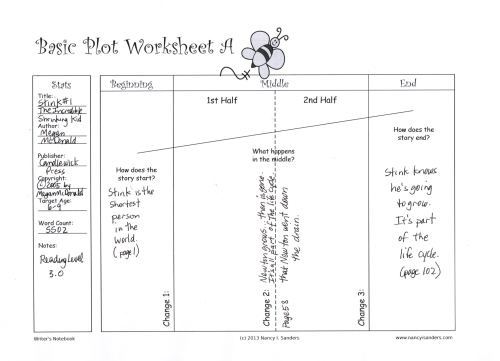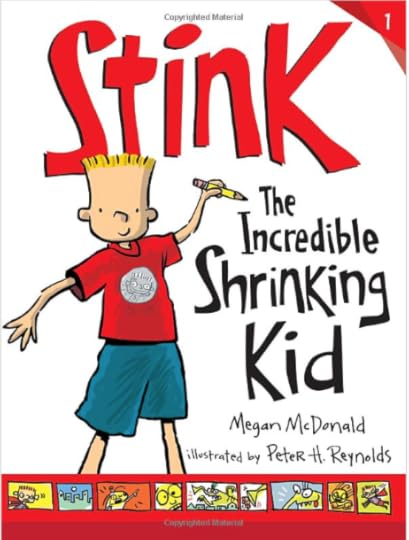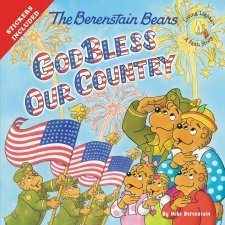Nancy I. Sanders's Blog, page 44
May 15, 2015
Faith Building Friday: Sing!
Those who plant in tears
will harvest with shouts of joy.
They weep as they go to plant their seed,
but they sing as they return with the harvest.
-Psalm 126:5-6, NLT
Have you been dejected from receiving rejections instead of seeing your manuscripts in print? Know this, scribe. As we sacrifice ourselves to write the words He calls us to write, there may be intense times of weeping on the journey to get it published. But His promise is sure–He will complete the good work He’s begun. There will be a day when we reap the harvest of our hard work, and that day will be filled with song. Why wait, then? Learn the melody today. In the midst of the tears, learn to sing as you write. Sing praises to the King of kings! After all, we’re just getting ready for the time–His time–when His purposes will be fulfilled through us.
Dear God, place a new song in my heart to sing even in the midst of all the rejections and despair. Remind me of Your promises. Remind me to sing! Amen.
___________________________________________________________________________
For more faith-building encouragement as a writer, visit my site, Scribes.
The pocket edition of Scribes: Devotions for Christian Writers is available at Amazon. What a great gift of encouragement to give to your critique group buddies and writer friends!
Filed under: Inspiration








May 14, 2015
Chapter Book: Your Mentor Text on a Plot Chart
Now let’s take what we’ve discovered about the beginning, middle, and ending of our mentor text, Stink #1 and let’s write it on its very own plot chart.
Here’s what we discovered by digging around on the first page, the last page, and the middle pages of Stink:
Beginning:
Stink is the shortest person in the whole world.
Middle:
Newton grows…then is gone. It’s all part of the life cycle that Newton went down the drain.
Ending:
Stink knows he’ll grow in time because it’s all part of the life cycle.
Go ahead and print out the Basic Plot Chart A that’s on my site, Writing According to Humphrey and Friends. (You’ll find it by scrolling down towards the middle.) Then write these key plot ingredients on your chart so it looks like the one I’ve written above.
Now spend time brainstorming ideas about what you want to have happen in you very own story.
We talked about how you want your story to begin and how you want it to end.
What do you want to have happen in the very middle of your story to tie that all together? Jot down ideas you have. We’ll talk more about this in an upcoming post.
Filed under: Chapter Books, Plots








May 12, 2015
Must-Have Workshop: This Week’s Teleclass on Setting
Where in the world is the setting for the story you’re working on?
Don’t settle for a sleepy setting when you can make your story shine as bright as the sun by choosing a setting that generates high-interest and kid-appeal. I’ll show you how.
This workshop on setting will benefit YOUR writing career! Great for picture books, children’s chapter books or novels, and novels for adults.
Learn to write like the pros and discover practical techniques you can use to make your setting impact your story in a powerful way. These are actual techniques I’ve learned from working closely with editors on many of my 100+ published books.
Get an insider’s look at how publishers actually want authors to deal with setting. Learn nitty gritty techniques you can use to find problem spots in your story’s setting and fix them. Discover how the genre you choose influences the setting you use.
Also in this workshop you will learn how to:
* Brainstorm a setting that rocks your characters’ world
* Develop setting in a magazine story, picture book, early reader, first chapter book, middle grade novel, and young adult novel
* Make your setting come alive to draw your reader into the world of your characters
* And more!
BONUS EXTRA!!! When you sign up for this audio workshop, you will receive three setting-buster worksheets I’ve created just for YOU (This is worth the price of the class right here):
* a list of 250 settings to choose from to make your setting be the best it can be!
* a brainstorming sheet for choosing the general setting as the backdrop of your story!
* a brainstorming sheet for choosing specific places for your characters to go to impact your story like the pros!
CLICK HERE for more information and to sign up today!
Join me live as I teach this teleclass this Thursday, May 14, 2015 at 2:00 Pacific Standard Time or sign up to get the audio recording. WWC Club members get half-off discount (It’s free to join!).
Why wait for a summer conference or pay the big bucks when you can learn these essential skills THIS WEEK?!!! Sign up here!
Filed under: Writer Workshops








May 11, 2015
Chapter Book: Plotting Your Mentor Text
In our last post about writing our early chapter book, we talked about the ending of our plot. How do you want your story to end?
Next we’ll talk about what happens in the middle of your story’s plot. But to LEARN from the pros, let’s first take another look at our mentor text. What happened in the middle of our mentor text? What was the turning point of the entire story?
First, let’s recap what we’ve discovered about the beginning and the end of Stink:
Beginning:
Stink is the shortest person in the whole world.
Middle:
??
Ending:
Stink knows he’ll grow in time because it’s all part of the life cycle.
Now let’s look inside our mentor text, Stink. Let’s dig around in the middle of the book. Let’s look for the knot that ties the beginning to the end. It’s like a gold nugget hiding in a mine, waiting for us to discover it and bring it to light!
Since Stink is 102 pages long, let’s turn to page 61. That’s exactly in the middle.
Page 61 starts with the sentence, “On Monday morning, when Stink told Mrs. D. about the G.D.I. (Garbage Disposal Incident), she said, “Let’s just tell the class Newton ran away. It’ll be our little secret.”
Okay, it’s pretty obvious that Newton going down the disposal is what happened in the middle of the book. But let’s go backward or forward a page or two to find the “a ha” moment, the moment of transformation, the moment when the characters change regarding this incident.
Again, we’re trying to find the gold nugget in the middle that ties the beginning to the end.
Turn back to page 58. Look at this conversation between Judy and Stink:
“What am I going to tell Mrs. Dempster? And my class?”
“They’ll understand. It’s all part of the life cycle, Stink.”
“The garbage disposal is NOT part of the life cycle!” said Stink.
Bingo! We found the gold nugget!!!! Look how this fits into the beginning and end:
Beginning:
Stink is the shortest person in the whole world.
Middle:
Newton grows…then is gone. It’s all part of the life cycle that Newton went down the drain.
Ending:
Stink knows he’ll grow in time because it’s all part of the life cycle.
I think that works, don’t you? It shows the thread that ties this whole story together from beginning to middle to end.
This is the gold nugget we’ll be looking for as we brainstorm ideas for the middle of our story plot, too.
And if you’re just joining us and want to catch up with us, CLICK HERE to read the first post on our new chapter book adventure. Then scroll through the posts on up until today’s.
Filed under: Chapter Books, Plots








May 8, 2015
Faith-Building Friday
GOALS
For I have come down from heaven,
not to do my own will,
but the will of Him who sent me.
-John 6:35, NKJV
Jesus’ only goal in life and only item on His “to-do” list each day was to do God’s will. As God’s scribes, how can we be any different?
Dear God, please whisper Your will to my writer’s heart today. Strengthen me to write and accomplish Your plan and purpose for my pen today.
___________________________________________________________________________
For more faith-building encouragement as a writer, visit my site, Scribes.
The pocket edition of Scribes: Devotions for Christian Writers is available at Amazon. What a great gift of encouragement to give to your critique group buddies and writer friends!
Filed under: Inspiration








May 5, 2015
Book Review: God Bless Our Country
The Berenstain Bears: God Bless Our Country
By Mike Berenstain
Summary
Hip hip hooray, for the U. S. of A.! The beloved Berenstain Bears are back again celebrating the Fourth of July with a big parade. Brother and Sister Bear are busy decorating their bikes to join in the festivities, and Mama and Papa Bear make sure they understand just why all the fireworks and fun are going on. This paperback picture book is a brand new addition to the meaningful series, Living Lights, where children learn how God wants them to live every day.
What I Like
My kids grew up reading the Berenstain Bears books and I love how the tradition continues for the next generation with these faith-building books. I especially like how this delightful new addition to the series talks about how our country was founded as a place where people from all over the world could come to be truly free. Papa Bear even tells the cubs that he believes “that it was God’s will that our new country came to be.” A great resource to reinforce patriotic love for our nation in our little ones! It shows people from all ages participating in the celebration, and has fun stickers, too!
-Thanks, BookLook Bloggers for another wonderful free book in exchange for my honest review!
Filed under: Book Review








Chapter Book: The Plot Ends
Right now we’re filling out our plot chart for our upcoming first chapter book that we’re going to write.
I’ve written various chapter books over my career and have had a number of them published with publishers big and small.
And the best thing I ever did was learn how to brainstorm ideas for the plot before I started writing the book. Taking time to do this saves so much headache later on.
As we talked about in our earlier post, the plot at its most basic level is how a story starts in the beginning, what happens in the middle, and how it ends.
Today we’re going to talk about how our story’s plot will end.
On our plot chart, we already wrote how the story starts. Each of our stories should start with the main story problem, just as our mentor text, STINK: THE INCREDIBLE SHRINKING KID does.
And likewise, each of our stories should end with the resolution of the main story problem.
How should we do that, though?
Once again, let’s turn to our trusty mentor text for our guide. (Don’t you just love using a mentor text?)
Turn to page 102, or the very last page if for some reason there are different versions of the book floating around out there. What does the last paragraph say?
Everybody says growing takes time, thought Stink. It’s all part of the life cycle. One day, it’s going to happen to me. Me! Mr. James Moody!
Viola! There it is. The ending.
So if the beginning of the book starts with the Main Character’s (MC) main story problem (As in Stink being the shortest person in the whole world) then the ending will be a resolution of that exact problem.
With books at this reading level, the ending can be fairly predictable based on which universal theme you chose.
For example, if your story starts out that your MC is afraid to go to the dentist or the doctor, the ending is that it wasn’t that bad and the MC isn’t quite as afraid any more.
Or if your story starts out that your MC discovers he had a loose tooth, the ending can be that he discovers a new tooth is growing in the hole where it fell out.
With this in mind, go ahead and write on the chart how you want your story to end.
If you have an exact scene already in mind, write that in. If not, don’t worry about HOW you’ll get that accomplished. Some writers prefer making this discovery when they get there during the writing process.
Just know the goal that you’ll be aiming for as you write.
This will help your story’s structure be stronger from the get-go and you won’t waste hundreds of words that you’ll need to try to go back and fix because you were wandering around while writing without knowing your story’s destination.
Next we’ll talk about your story’s middle.
And if you’re just joining us and want to catch up with us, CLICK HERE to read the first post on our new chapter book adventure. Then scroll through the posts on up until today’s.
Filed under: Chapter Books, Plots








May 1, 2015
Faith-Building Friday
COMMITMENT
Commit your works to the Lord,
and your thoughts will be established.
-Proverbs 16:3, NKJV
An amazing thing happens when we commit our manuscripts to the Lord for Him to use according to His holy purposes. Our thoughts gel. Suddenly, we just KNOW what we’re supposed to write. He establishes our thoughts to put words down on paper that will minister to hearts much in the same way that a tree offers shade to weary travelers in a hot and dusty desert.
Dear Lord, I commit my thoughts, efforts, and words to You. I offer myself as a sacrifice to accomplish Your purposes through me and through the words that I write.
___________________________________________________________________________
For more faith-building encouragement as a writer, visit my site, Scribes.
The pocket edition of Scribes: Devotions for Christian Writers is available at Amazon. What a great gift of encouragement to give to your critique group buddies and writer friends!
Filed under: Inspiration








April 30, 2015
Chapter Book: The Plot
Here’s the sentence we’ve been working on for our new early chapter book:
The MAIN CHARACTER who lives in SETTING does his UNIVERSAL THEME and has a PROBLEM.
Now that we have a sentence and have brainstormed all this information, we’re ready to talk plot.
Hey, if you were in charge of building this huge skyscraper I saw in Boston when we took a trip there, you’d plan the structure before you built it, wouldn’t you? It’s the same with plot. Planning the plot structure before you write is helpful to keep your story strong in the right places so it doesn’t come crashing down all around you while you’re working on it. That would be messy, right?
PLOT
Pure and simple, the plot of a story is how it starts in the beginning, what happens in the middle, and how it ends.
So that’s what we’re going to talk about today. For starters, hop on over to my site, Writing According to Humphrey and Friends. Scroll down to the BASIC PLOT WORKSHEET A and print out a copy for you to use.
Let’s fill out this worksheet together to plan the plot structure for our early chapter book. While I fill out mine, you can fill out yours. We’ll brainstorm together here today for the very first part:
The Beginning: How does the story start?
For help as we brainstorm, let’s take a peek at our trusty mentor text, Stink: The Incredible Shrinking Kid by Megan McDonald.
Turn to the opening page of Chapter 1. Read it.
Guess what?!!! On the very first page, we discover Stink’s problem.
He is the shortest human being in the world.
So guess what?!!! For your very own early chapter book, you want the story to start with your main character’s problem.
So go ahead and write that down on the chart you just printed out. Under the question: How does the story start?
That wasn’t too hard, was it?
In an upcoming post we’ll talk about what happens in the middle. We’ll keep working on this chart until we have it filled out. Together!
Filed under: Chapter Books, Plots








April 27, 2015
Chapter Book: Just Write
This past weekend I went to our local Orange County Christian Writers Conference that takes place every year. It was so much fun to network and meet such great fellow writers and learn and grow and get inspired all together!
But in the meantime since we’ve been playing around with our sentence we’ve been working on, my brain has been taking off.
Here’s the sentence framework we’ve been working on:
The MAIN CHARACTER who lives in the SETTING does his UNIVERSAL THEME and has a PROBLEM.
My brain has been having snippets of conversation pop in with ideas when I’m doing other things. And snapshots of scenes.
So I’m keeping a notebook handy to write down all these things. I don’t want to waste anything that pops into my head!
I mention this here in my post today because I want to encourage you to just write if you have ideas that are taking shape in your head. There’s no right or wrong at this point.
Just write if you want to.
But keep on with the exercises we’re going to be doing here to help get everything into shape before you get too far.
And if you don’t have any ideas to write about yet, don’t worry! You don’t need to write a thing. We’re going to do some pre-writing exercises to get things in shape for our writing journey.
And if you’re just joining us and want to catch up with us, CLICK HERE to read the first post on our new chapter book adventure. Then scroll through the posts on up until today’s.
Filed under: Chapter Books








Nancy I. Sanders's Blog
- Nancy I. Sanders's profile
- 76 followers












